Many friends who have just learned about Tenmoku have a lot of doubts about its price and do not know how to choose, so they come to me for advice. The price of Tenmoku on the market varies from a few hundred to tens of thousands of dollars, while the works of famous masters range from tens of thousands to hundreds of thousands of dollars, and old Tenmoku can cost millions. Some works by famous masters have been auctioned off for millions or even tens of millions of dollars. There are also some Tenmoku sold on street stalls without a clear price, which sell for a few tens of yuan. Not to mention the old Tenmoku left over from the Song Dynasty, each of which is a unique and rare piece. It can be said that the difference in Tenmoku prices is very large.
The price of Tenmoku is determined by many factors. For example, the larger the size of the bowl, the more expensive it is compared to bowls with the same glaze color and grade. So how do you choose the right Tenmoku for yourself?

The same type of Tenmoku pattern (such as rabbit hair, oil spot, partridge feather, yao bian, mixed glaze, etc.) has a relatively higher price for a larger diameter, and the pattern's appearance also affects the price.
For example, with the rabbit hair pattern, the distribution of the spots should be sparse and uniform, and the hair lines should be stretched out. The rabbit hair should be sparse and arranged neatly with clear borders, giving a sense of hierarchy.
Oil spot pattern (partridge feather) is the most common type. The firing process for oil spot Tenmoku requires a reducing atmosphere and is a great test of the teacher's skill. The size of the oil spots in the pattern varies, and the spots are evenly distributed both inside and outside the bowl. The crystals are full and the metal texture is strong. The glaze is as smooth as a mirror, and a three-dimensional effect is desirable.

Yao Bian Tenmoku is the most precious variety. The yao bian pattern is actually a thin film around the ring, which is like a halo that radiates outward from the ring. The material that forms the pattern is the most dispersed and free, and its main feature is actually the "image", not the "shape". These "images" are traces left by crystalline substances in the glaze surface due to violent turbulence. The distribution of yao bian patterns on the glaze surface is also the most irregular and uneven. Yao bian is internationally recognized as a masterpiece of porcelain glaze art and is the lifelong pursuit of all Tenmoku teachers. It is like the vast universe, giving people endless imagination.
The manufacturing process of Tenmoku also affects its price (such as hand-pulled clay, machine-pressed clay, semi-handmade, etc.). Machine-pressed clay is formed by extruding the clay with a mold and is mass-produced, while hand-pulled clay is made by the teacher's handcrafting and repairing each bowl individually.
Hand-pulled clay is made following the traditional method and generally has a heavier feel. Even for the same teacher and the same design, each bowl may vary in height, size, weight, and shape. Therefore, handmade bowls are more varied, have a higher density, and are less prone to deformation. The most important thing is that each bowl is unique and represents the artistic soul of the craftsman who made it.

The hand-pulled clay has a heavier feel, while the machine-pressed clay is lighter. The bottom of the hand-pulled clay naturally has traces of the turning wheel, some of which are obvious, while others can be noticed only upon closer inspection. The bottom of the machine-pressed clay is relatively flat and smooth, without any turning wheel traces. When looking at the charm of a Tenmoku, generally, the hand-pulled clay bowls have more spirit and are not as rigid as those made by machine pressing.
Choose a legitimate Tenmoku shopping mall to purchase from, and be cautious when buying those without a stamp or signature. Many well-known craftsmen only produce fully handmade works, and of course, each teacher's firing techniques differ, resulting in different prices.
Everyone has different starting points when it comes to Tenmoku, with different preferences, aesthetics, and economic conditions. When choosing a Tenmoku that suits you, the first thing to consider is whether it will be used for tea drinking or mainly for collection purposes, and then decide based on your own economic situation.
Tenmoku was a tea bowl used exclusively by the royal family during the Song Dynasty. After being revived in 1979, it became a part of China's intangible cultural heritage. Each bowl is unique, with a uniform color when fired, but a diverse range of colors when finished. Each Tenmoku is a masterpiece in its own right.
The "Jun Tai Guan Zuoyou Zhang Ji" records: "Yao Bian Tenmoku is the supreme masterpiece worth ten thousand pieces of silk; Oil spot Tenmoku is the second treasure worth five thousand pieces of silk; Rabbit hair Tenmoku is worth three thousand pieces of silk." This "pricing" actually shows that the firing conditions for oil spot Tenmoku are more demanding than for rabbit hair Tenmoku. If the kiln temperature is not controlled properly, low temperature makes it difficult to form a spotted pattern, while high temperature makes the spots more likely to flow into streaks. Therefore, surviving and excavated oil spot Tenmoku from the Song Dynasty are rare, and intact pieces are even more scarce


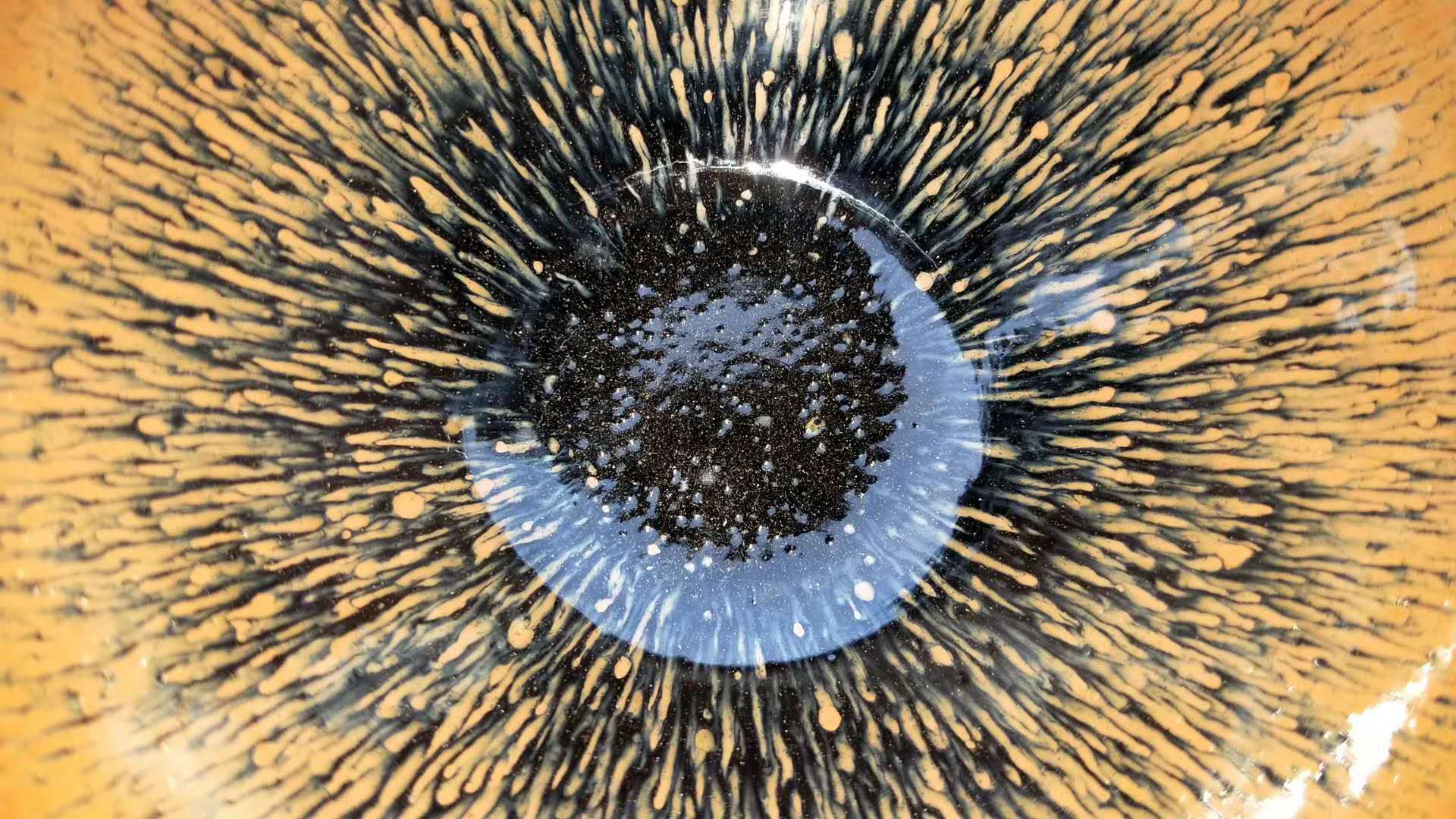
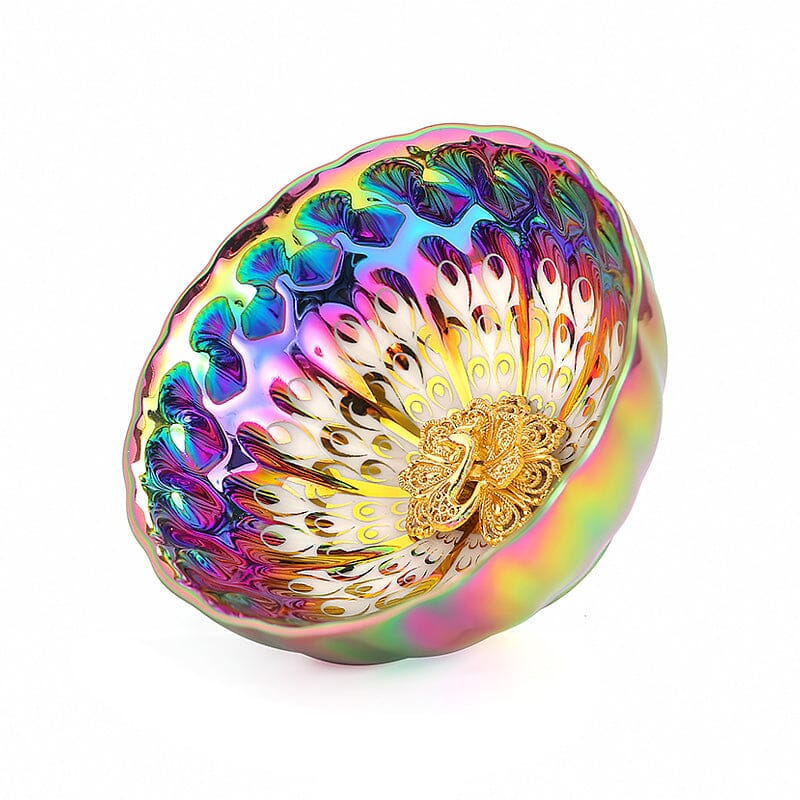
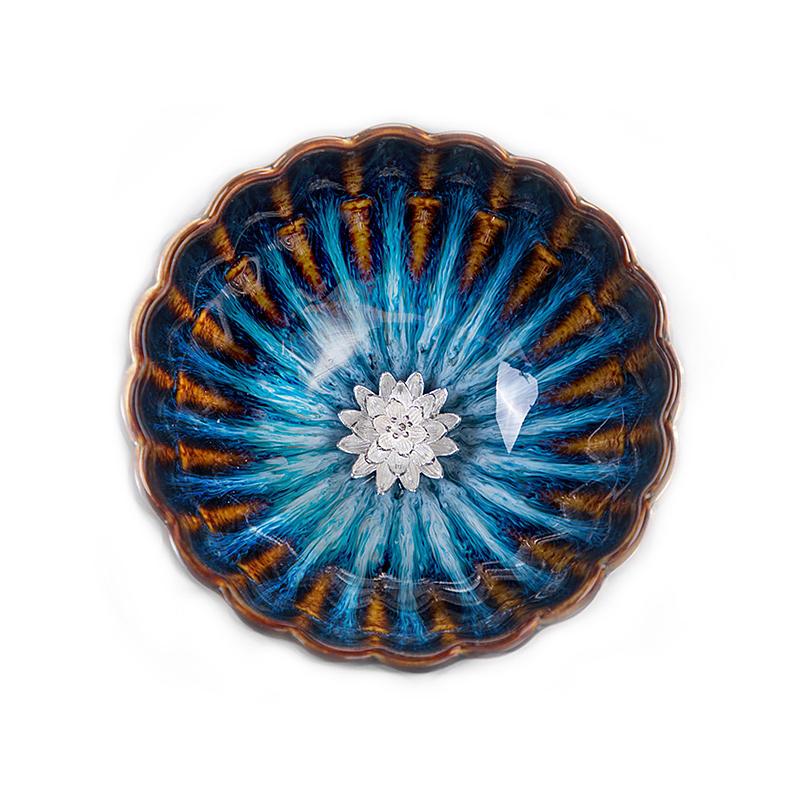
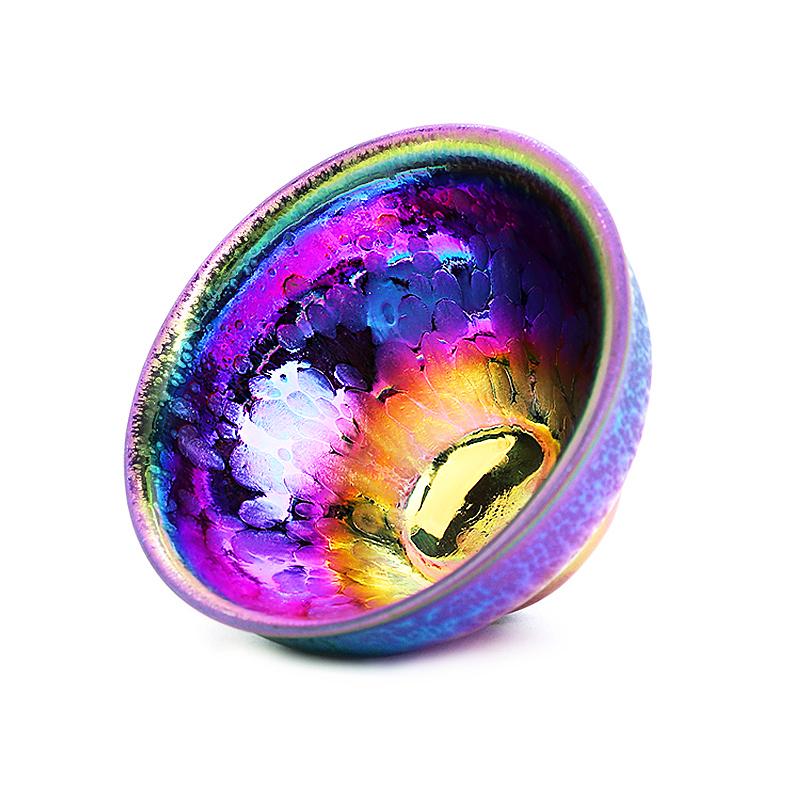
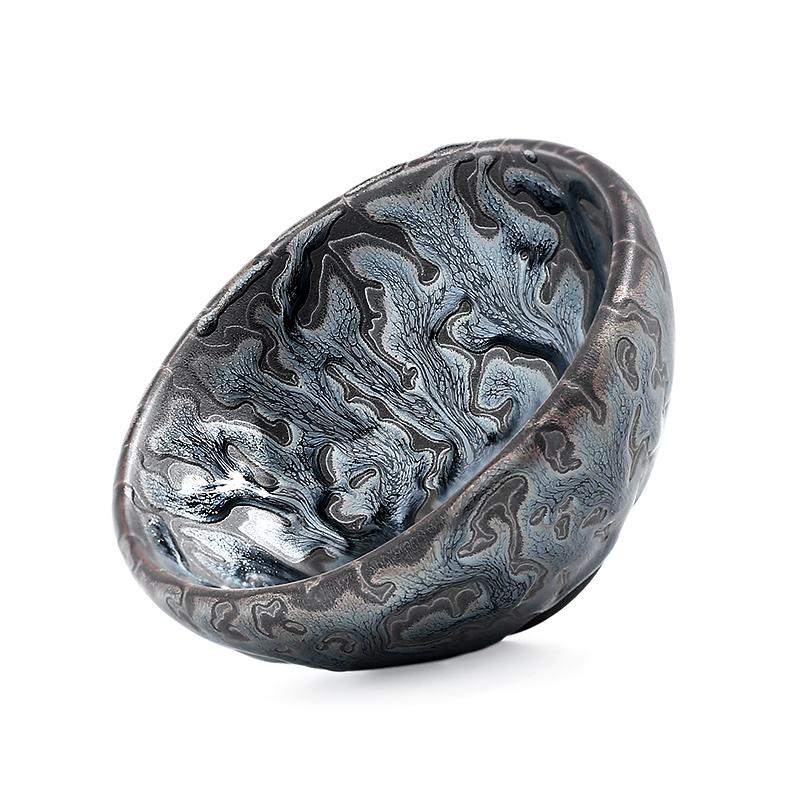
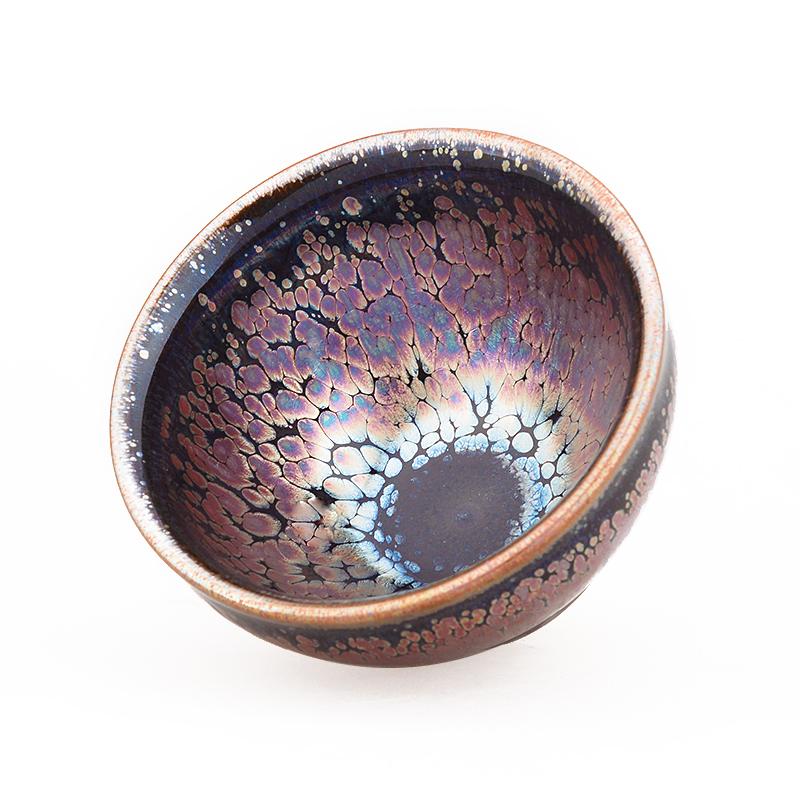
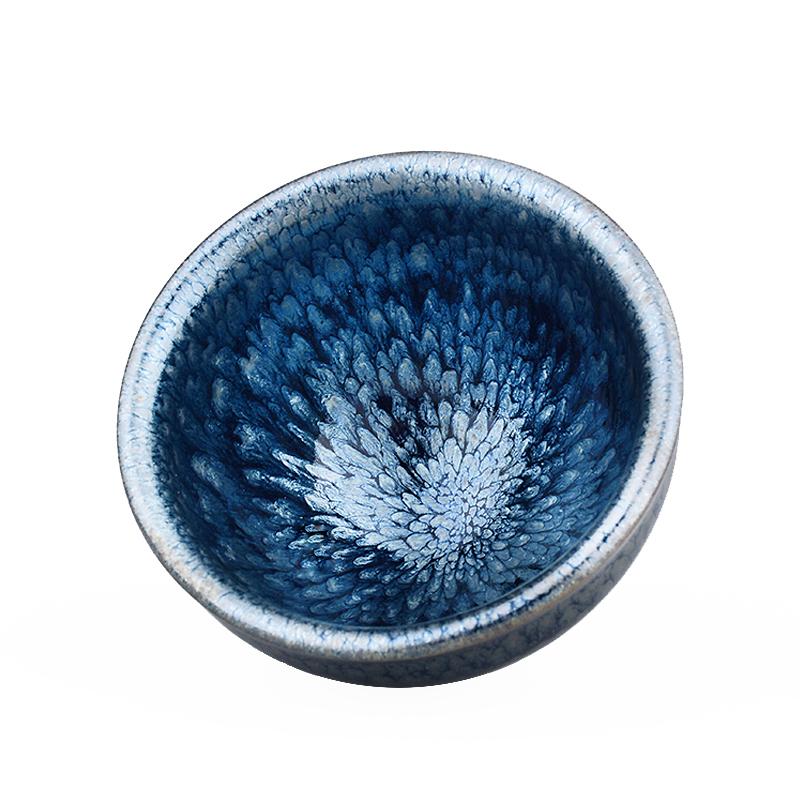
Share:
Tenmoku: One color in, ten thousand hues out.
How can one choose Tenmoku to avoid falling into a trap?